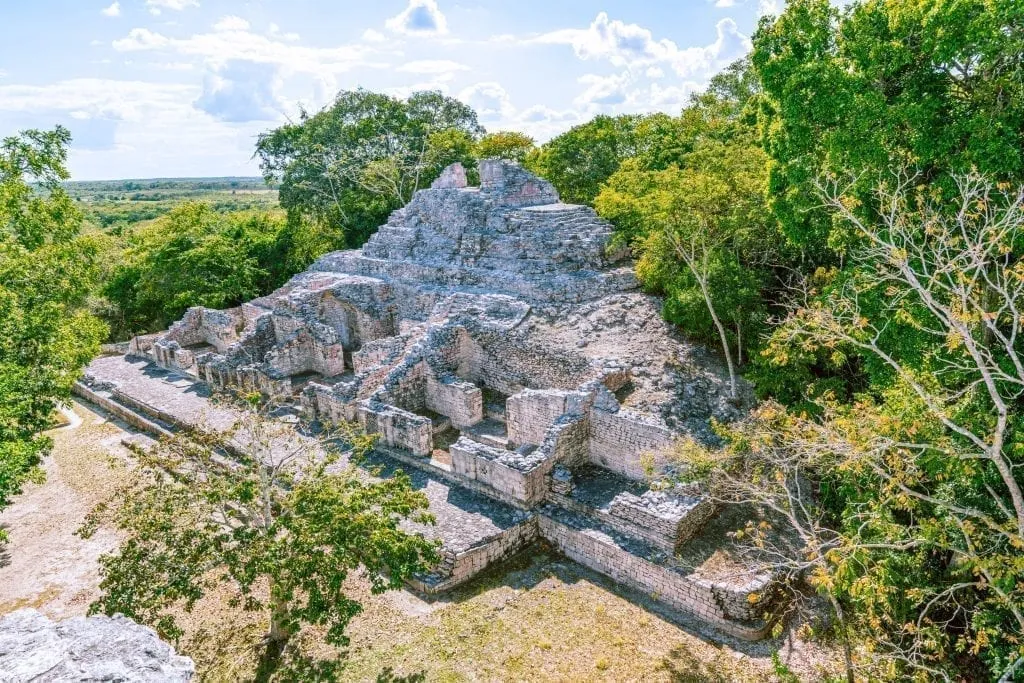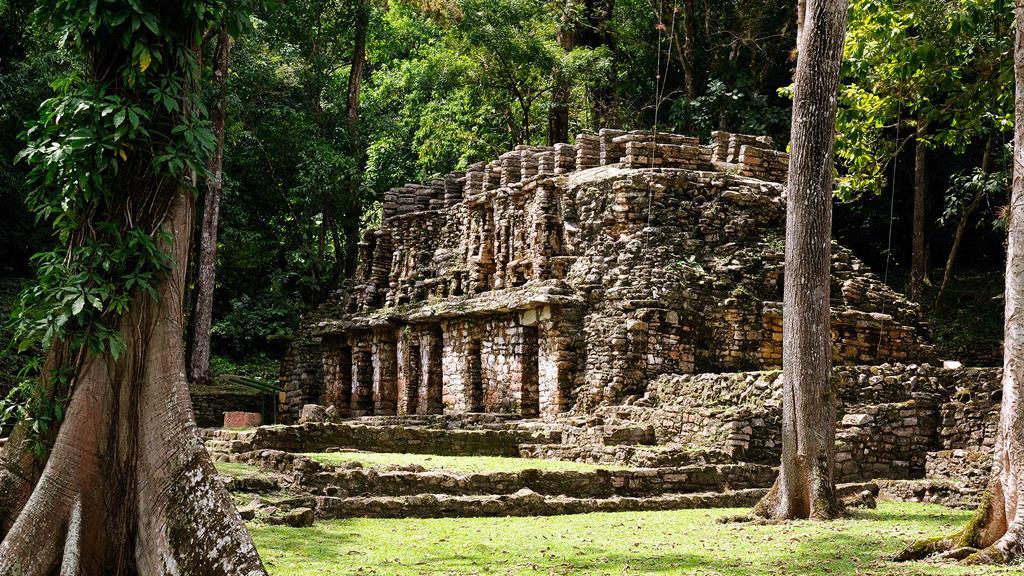11 Best Mayan Ruins in Mexico, Perfect Destination for You
The Maya development was a Mesoamerican culture whose domain extended based on what is currently southern Mexico through Guatemala, Belize, Honduras, and El Salvador. They fabricated many great urban areas along with a complicated organization of streets and managed the district for many years. They were ace mathematicians, space experts, specialists, and ranchers.
Today, their way of life flourishes in numerous far-off networks in Mexico. Indeed, the Mayan language is as yet perfectly healthy in this piece of the country.
The vast majority of their urban areas were deserted constantly 900, yet what they passed on behind were striking signs revealing the insights concerning their set of experiences. Numerous voyagers have likely known about their significant urban areas, like Chichen Itza and Tulum. However, in all honesty, there are tons of Mayan ruins dissipated the whole way across Mexico’s southern states, from Quintana Roo and the territory of Yucatan to Campeche, Chiapas, and even Tabasco.
To comprehend the Mayan ruins culture is to venture into their perspective and walk their old roads truly. Please find the best places to visit for this with our rundown of the top Mayan ruins in Mexico.
ChichénItzá


It’s difficult to discuss Mexico’s Mayan demolitions and leave out Chichen Itza. One of the New Seven Wonders of the World, Chichen Itza, is known throughout the planet, and its picture is one of Mexico’s generally perceived.
Situated in the territory of Yucatan, a piece of Mexico’s Yucatan Peninsula, Chichen Itza was a flourishing where are the Mayan ruins city that traces back to around the fifth century. It was perhaps the biggest city in the Mayan world, spread over around two square miles. It clamored as a center point of business, had homes, strict landmarks, and, surprisingly, rural areas.
One of the features of Chichen Itza is El Castillo, a numerically and deductively planned advanced Mayan ruins that is the best indication of the Mayans ‘ comprehension of cosmology. There are 365 stages (one for every day of the year) and double a year on the spring and harvest time equinoxes. A shadow shows up on the pyramid that takes the state of a snake – an accolade for the main Mayan god, Kukulcan, a padded snake.
Tulum


Nearly as conspicuous as Chichen Itza seems to be the beachfront remnants of Tulum. The picture of its biggest construction, El Castillo, is famous for the objective: roosted on a precipice sitting above the attractive turquoise Caribbean Sea.
It is one of the most visited locales in Mexico, with multiple million guests each year. The first name of the site was Zama, which implies dawn. It’s no big surprise why – the dawns here are dynamite and positively worth the early reminder to encounter.
At its stature, around the thirteenth century, the city was a passage to associate the Yucatan Peninsula with individuals of Honduras and different spots in the Gulf of Mexico.
Make certain to bring a swimming outfit when visiting this site. The sugar-shaded sand underneath the remains is a well-known spot to take a plunge in the wake of visiting the antiquated city.
Coba


In contrast to its neighbors, Chichen Itza and Tulum, Coba has floated generally under the radar as far as notoriety. That is because it wasn’t available to the general population until the 1970s. After all, the encompassing wilderness was too thick even to consider entering.
Today, just a little level of the site has been uncovered, yet it is one of the biggest Mayan urban communities in Mayan ruins, crossing around 30 square miles. Bikes are accessible for lease to investigate the four square miles that are available to the general population.
What’s cool with regards to Coba is that it is one of the final archeological destinations in Mexico that guests can, in any case, climb. The pyramid to scale is NohochMul, the primary design, which is rose using steep, tricky stone advances. However, it’s awesome for the view, which traverses miles toward each path out over the thick, green wilderness.
Palenque


Somewhere down in the fog-covered wildernesses of the territory of Chiapas lies one of Mexico’s most great Mayan urban areas. The previously composed record of Palenque traces back to the sixteenth century, yet its set of experiences traces back to about the third century.
It isn’t the biggest Mayan city, yet it is one of the most significant because of its sheer volume of engravings – a written history that has assisted researchers with genuinely understanding the subtleties of Mayan history and culture.
The site is sprinkle with many vestiges that were once dynamically shaded with reds, blues, and yellows while a stony dim now. The most noteworthy design is the Temple of the Inscriptions, which contains many hieroglyphics in Mayan ruins. The whole site was name a UNESCO World Heritage Site in 1987.
Calakmul


For over 1,200 years, the city of Calakmul was an essential piece of the Mayan ruins of the Cancun world. Today, the site is situated inside the territory of Campeche on more than 7,000 sections of land of World Heritage property inside the Calakmul Biosphere Reserve.
The whole site is cover in thick, tropical timberland – the second biggest tropical woods in the Americas after the Amazon. Truth be told, the wilderness is excessively thick such that Calakmul stayed neglected and immaculate for quite a long time. It just turned into a World Heritage site in 1993.
At its stature, around the sixth century, roughly 65,000 individuals lived in the city. Its greatest opponent was Tikal, right across the boundary in Guatemala. The main construction at the site is The Great Pyramid, whose base traverses five sections of land and whose pinnacle rises 174 feet. It is the tallest pyramid in the Yucatan and, indeed, you can climb it in Mayan ruins.
Bonampak


The name “Bonampak” means “painted dividers,” which couldn’t be a seriously fitting title for this Mayan site in Chiapas. The primary construction of the archeological site is sprinkle with lively, beautiful wall paintings. Indeed, these are the most protected wall paintings in the whole Mayan world. It was established around AD 580, and the city utilize the Usumacinta River to exchange with other well-known Mayan urban areas like Yaxchilan and Piedras Negras.
Bonampak remains marginally off the traveler trail since it’s somewhat of a climb to get to. The site is around 2.5 hours from Palenque down a limited street through the wilderness. Be that as it may, guests are remunerated with a moderately close encounter encompassed by shocking visuals. The wall paintings recount accounts of Mayan ruins, from festivities and penance to music and war.
The actual artworks date back over 1,000 years and are vigorously secured. However, guests can, in any case, see them from an incline inside the entryway.
Ek’ Balam

Ek’ Balam is a city that was bafflingly restricted just after its top in the eighth century. Still especially concealed by wilderness, the stunning site highlights pyramids, a ball court, and, most eminently, an Acropolis.
At the highest point of the Acropolis is the principle pyramid of Ek’ Balam, which includes a monstrous panther mouth (EkBalam signifies “the dark puma”), plaster skulls, winged shaman figures, and different improvements.
Uxmal


Right outside the city of Merida in the province of Yucatan stands this antiquated Mayan city that was once home to 20,000 individuals. The city name means “Threefold Built,” which alludes to its tallest construction, The Pyramid of the Magician, which was based on top of existing pyramids.
The city is a significant stop on the RutaPuuc in Mayan ruins, which is a driving street that interfaces adjoining Mayan urban areas. Three related urban communities are Kabah, Labna, and Sayil. Puuc alludes to both a locale and a style of design. Today Uxmal is a UNESCO World Heritage Site that ranges around 150 sections of land and incorporates many constructions that guests can climb.
Becán


If you thought Chichen Itza was amazing, delay until you gaze upon Becan. Situated in the territory of Campeche, Becan is one of a few Mayan destinations close to Calakmul and is one of the most noteworthy yet completely under-visited.
The site sits on roughly seven sections of land, where 20 designs are available to the general population. The enormous pyramids are what separate this site. However, they supposedly worked more for show than work. A valid example: the presence of many phony flights of stairs and bogus doors.
At the time of its height, Becan was a significant capital of the Rio Bec region and was one of the numerous urban communities that struggled with Tikal in Guatemala. A canal encompasses the city, and there is proof of dividers and passages.
Edzná


Situated in the northern piece of the province of Campeche, Edzna is a surprising Mayan site that is undeniably less dealt with than different destinations in the district.
It is set apart by its principal sanctuary, which sits on a 130-foot stage known as the Gran Acropolis. It likewise has a ton of fun courts, which is still superbly protect. The city was desert around the year 1,500. However, students of history accept that it might have been possess as right on time as 600 BC. It is one more illustration of Puce-style engineering.
Another significant construction is the Temple of the Masks, which wasn’t reveal until 1988. The structure has two veils at its base: one addressing the Sunrise God and the other the Sunset God. The city was at its top between AD 400 and 1000 when around 25,000 occupants lived there.
Yaxchilan


Traveling to Yaxchilan is truly similar to venturing into an Indiana Jones experience. To arrive at the site on the Usumacinta River in Chiapas requires a Colectivo or transport to Frontera Corozal, where voyagers can get a boat to the remnants. You can DIY, yet most guests select a visit to mitigate the pressure of arranging boat costs.
Be that as it may, the gutsy spirits are remunerate with a critical encounter. The wilderness city was once a huge settlement that regularly was at battle with adjacent Palenque. There are more than 120 structures that make up three buildings: the Great Plaza, the Grand Acropolis, and the Small Acropolis. What makes Yaxchilan important are the tremendous measures of stelae, carvings, and wall painting compositions. Truth be told, it has the absolute best carvings of any Mayan ruins in Mexico city. To visit Yaxchilan is to leave on an undertaking that will remain with you for a long, long time.
Read More :

